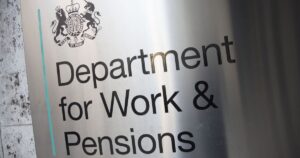
Workers are being urged to check their payslips this week for the six digit code which could mean they’re owed hundreds back from HMRC.
Tax codes are the numbers given by HMRC on a pay slip or tax documents and are used to work out how much income tax you pay.
With the deadline for self-assessment tax returns looming on Friday, this is a good week to review your tax affairs and check if you’re owed, whether you’re submitting a return or not.
Being on the wrong tax code, which can happen if you have income from multiple sources or earn money from self employment, can cost each taxpayer thousands of pounds in overpaid tax, although the money can be reclaimed from HMRC.
Last year Canada Life found 6% of taxpayers it surveyed found they had been on the wrong tax code during the previous financial year.
Three quarters of those who have found they were on the wrong tax code had been overpaying HMRC by an average of £689, or £5.8 billion as a nation.
The findings also show that nearly one in five UK adults have never checked their tax code.
Those who have checked their tax code have only done so on average once every 16 months.
Brits most commonly check for no specific reason (19%) or out of habit (17%), but others have done so due to a job change (12%) or having been on the wrong tax code before (8%).
Among all UK adults, less than half (42%) know that it is currently correct. Moreover, almost four in ten (39%) don’t know what any of their tax code means, leaving them at a disadvantage in the first place.
Over two-thirds (69%) say they do not know the rules around claiming back overpaid tax.
Whilst HMRC may notify some people of rebates it is up to the individual to claim it back.
John Chew, tax and estate planning specialist at Canada Life, said 1257L was the most commonly used tax code.
“This is whern you have one source of income, either through a job or pension, and means you can earn £12,570 a year (your personal allowance) before you start paying income tax.
Your tax code can vary from the standard if you receive benefits from your job, such as a company car or healthcare. HMRC can also apply a different tax code if it wants to claim back tax you’ve underpaid.
“Understanding your tax code is vital to ensure you’re paying the right amount of income tax. Those who are not on the right code may find themselves out of pocket. If it’s wrong, you may end up contributing more or less than you’re supposed to. So, if you haven’t checked your tax code(s) recently, now is a good time.
Chew said if you think your tax code is wrong, you need to contact HMRC directly.
He said: “Your employer (if relevant) won’t be able to do this for you. You can check HMRC has your correct, up to date information online. If you’re on the wrong code you might need to update your employment details, or whether you’ve had a recent change in income.”
“However HMRC may already be aware of in which case you should be sent a tax calculation letter (a P800 form) or a Simple Assessment letter by the end of the tax year (April 5th), which will tell you how to pay HMRC or reclaim overpaid tax. You will only be sent one of these forms if you are employed or receive a pension.”
“Remember, there are time limits to reclaim overpaid income tax, which is four years from the end of the tax year in which you are trying to claim so if you are in any doubt, the earlier you contact HMRC, the better.”
The T code means that the individual’s personal allowance includes other calculations, whereas 0T indicates that their allowance has been fully used up or they have started a new job.
Tax code L means you are entitled to the standard personal allowance, while the code M shows that they have received 10 per cent of their partner’s allowance through the Marriage Allowance.
Code N, on the other hand, signifies that 10 per cent of the individual’s allowance has been transferred to their partner.
The BR, D0, and D1 codes indicate that all income is taxed at basic, higher, or additional rates, respectively.
The K code shows that the individual has income exceeding their tax-free allowance, which is not being taxed in another way.
Alternatively, individuals can check their code through the HMRC app or online via the Government Gateway. If they don’t already have one, creating an ID will be necessary.


















